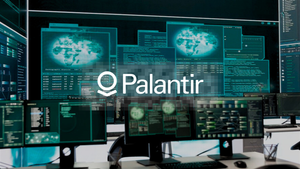In the dynamic world of business, a CEO's job is defined by the quality and speed of their decisions. The stakes are perpetually high, and the sheer volume of data, market volatility, and competitive pressure can overwhelm even the most experienced leader. This is where Artificial Intelligence (AI) transforms from a technical novelty into an indispensable strategic partner, allowing executives to truly "Think Like a CEO" by focusing on vision, strategy, and judgment, while AI handles the complexity.
AI is not here to replace the CEO's intuition but to augment it, providing an evidence-based foundation for every major choice—from resource allocation to market entry.
1. The CEO's Challenge: Overcoming Cognitive Overload
Modern executives are drowning in data, from fragmented reports and conflicting dashboards to constant real-time market signals. The traditional approach of relying on gut feeling or slow, backward-looking analysis is no longer viable. AI addresses this by providing three key capabilities:
- Real-Time Intelligence: AI systems can process massive, complex datasets (both structured and unstructured) from across the organization—sales, operations, finance, and social media—in real time. This capability gives the CEO an up-to-the-minute, holistic view of the business, enabling proactive rather than reactive leadership.
- Pattern Recognition & Anomaly Detection: Human analysts can miss subtle correlations in data. AI, leveraging advanced machine learning, excels at uncovering hidden patterns, forecasting future trends, and flagging critical anomalies that indicate either an emerging risk or a major opportunity.
- Reduced Bias: Decisions based purely on human experience are susceptible to cognitive biases (like confirmation bias or anchoring). AI provides an objective, data-driven recommendation, acting as a critical challenger to the leadership team's pre-existing assumptions.
For a detailed analysis of AI-driven decision-making in executive leadership, see this Forbes article on how AI is transforming leadership decision-making.
2. Strategic AI: Augmenting the Decision-Making Spectrum
AI's utility in the boardroom spans the entire decision-making lifecycle, from research to execution:
Predictive and Prescriptive Analytics
Instead of merely reporting what has happened, AI focuses on what will happen.
-
Forecasting: Predictive models allow CEOs to anticipate market shifts, consumer demand changes, and potential supply chain disruptions with unparalleled precision.
-
Scenario Planning: Generative AI tools can simulate countless "what-if" scenarios based on variables like competitor moves, economic conditions, or new product launches. This provides an executive with a sandbox to test the potential impact of different strategies before committing resources.
The "Chief of Staff" AI
AI takes on the heavy lifting of information synthesis, effectively serving as an ultra-efficient research arm for the executive suite. For instance, AI can quickly summarize long internal documents, news articles, or meeting transcripts, distilling pages of information into concise, actionable points. Leaders can leverage platforms that offer deep analytical support to get the answers and context needed for informed decision-making, eliminating the need for long fact-finding missions. Organizations looking for sophisticated ways to manage this complexity and accelerate their operational intelligence should get more info from innovative platforms designed for executive strategic decision support, such as those detailed at .
3. Leading with an AI-First Mindset
Adopting AI is not just an IT project; it's a fundamental shift in leadership philosophy. CEOs must lead the charge in fostering an AI-First Culture:Focus on the Right Questions: The CEO's role shifts from finding the answers to asking the right questions. The quality of the output from an AI system is directly tied to the clarity and depth of the initial prompt or inquiry. As highlighted by Harvard Business Review, leaders who frame the right questions enable AI to generate more valuable business insights.Embrace Human-AI Collaboration: The most successful model is Decision Augmentation, where AI generates optimal alternatives, but the human CEO makes the final, values-based judgment. The AI provides the data, while the CEO provides the wisdom and ensures the decision aligns with the company's core mission and ethical framework — a principle also supported by research from MIT Sloan Management Review.Invest in Data Governance: AI is only as good as the data it consumes. CEOs must prioritize cleaning, securing, and integrating their enterprise data to ensure the AI's predictions are accurate, unbiased, and trustworthy. According to McKinsey & Company, robust data governance is a key differentiator in successful AI adoption.
Conclusion
The new benchmark for elite leadership is not simply making decisions, but making data-driven decisions at the speed of business. By integrating AI into the core of the strategic process, the modern CEO moves beyond reactive leadership. They gain the agility to navigate uncertainty, the foresight to capitalize on emerging opportunities, and the confidence to lead their organization toward sustainable, aggressive growth. Thinking like a CEO in the age of AI means embracing this powerful partnership to transform complexity into clarity.
Media Contact
Company Name: Skywork
Email: Send Email
City: San Francisco
Country: United States
Website: https://skywork.ai/







